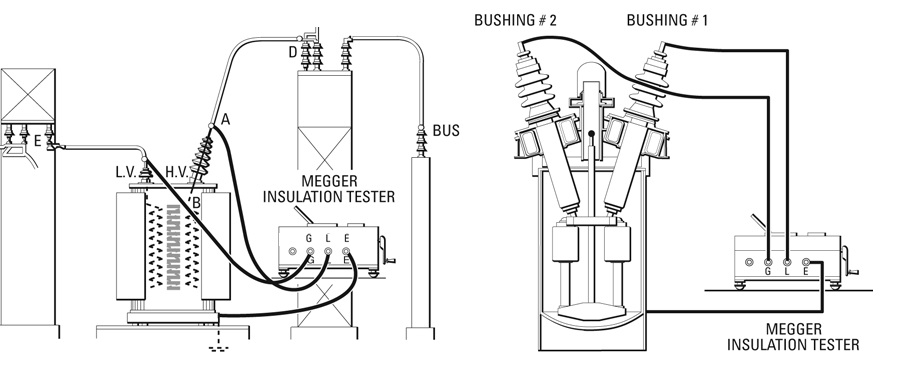The insulation test content of the transformer is to meet the needs of electrical installation engineering and electrical equipment handover test, the international standard IEEE43-2000 electrical equipment handover test standard describes the contents and standards of each test in detail. Where in the DC resistance of the winding is measured together with the bushing, the insulation resistance, the absorption ratio and the polarization index of the winding together with the bushing are measured, the tangent value tgS of the dielectric loss angle of the winding together with the bushing is measured, and the DC leakage current of the winding together with the bushing is measured, AC withstand voltage test of the winding together with the bushing, partial discharge test of the winding together with the bushing. It is the main means of testing transformer insulation.
The basic principle of insulation test: The test of insulation resistance is the most widely used and most convenient test in electrical equipment insulation test. The value of the insulation resistance can effectively reflect the defects of the overall moisture, contamination and severe overheating of the insulation. The most commonly used instrument for testing insulation resistance is the insulation resistance tester (megohmmeter).

Measurement of winding DC resistance
The measurement of DC resistance of winding is a convenient and effective test to investigate the connection condition of vertical insulation and current loop of winding, which can reflect the quality of winding welding, short circuit between turns of winding, break of winding or lead wire break, minute Faults such as poor contact between the switch and the wire connector are actually effective means for judging whether the DC resistance of each phase winding is balanced and whether the voltage regulating switch gear position is correct.Winding DC resistance measurements have long been considered as one of the primary means of examining the longitudinal insulation of transformers, and sometimes even the only way to determine the current loop connection.
Measurement of
winding insulation resistance
The insulation resistance and absorption ratio or polarization index of the winding together with the casing have high sensitivity to the inspection of the overall insulation condition of the transformer. It can effectively check the overall moisture of the transformer insulation, moisture or dirt on the surface of the component, and the concentrated defects of penetration, such as various penetrating short circuits, porcelain cracks, lead shells, copper wire bridges in the body, etc., such as semi-through or metallic short circuit.
Relatively speaking, relying solely on the absolute value of the insulation resistance to judge the winding insulation, its sensitivity and effectiveness are low, on the one hand, the test voltage is too low during measurement, it is difficult to expose defects; on the other hand, the insulation resistance value is related to the size of the winding insulation structure, the type of insulation material, the winding temperature, and the like. However, for core clamps, piercing bolts and other components, measuring the insulation resistance can often reflect the fault. This is because the insulation structure of these components is relatively simple, the insulation medium is single, under normal conditions, it is basically not subjected to voltage, and the insulation is more isolated. Unlike winding insulation, it is subject to high voltages. In our test, we found the multi-point grounding of the transformer core through the insulation shaker.
JYM Insulating Resistance Tester-Kingrun
Kingrun Transformer Instrument Co.,Ltd.


More Transformer Testers from Kingrun
